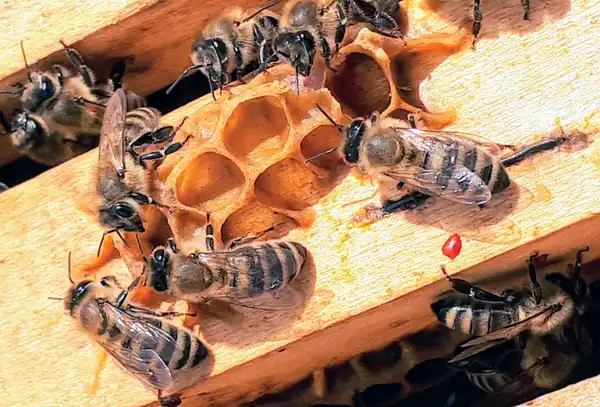
Everything you need to know about stem cells
What are stem cells, and what makes them so unique? What are the different types of stem cells, and how have they impacted modern medical science? Here is us answering all your questions about stem cells.

If there is one food product that is loved by people all over the world, it would certainly be honey. Statistical reports show that 1.83 million metric tons of honey was produced in the year 2015 from across the globe, making it the highest production volume of honey in many years. Clearly, we humans love our honey and love the busy, buzzing insects that make them - the honeybees! Based on some broad approximations, beekeepers commonly estimate that a single teaspoon of honey requires a lifetime’s work of 12 honeybees!
Wait, what? 12 honeybees just to make a teaspoon of gooey (and of course tasty) substance? A teaspoon that we casually devour in less than 12 seconds? Now that sounds like a lot of work! Perhaps the least we could do is to understand how our honey-producing buddies manufacture this tiny spoon of goodness.
So let’s get a little nerdy and dive into this question, shall we?
Bees are indeed classified as insects, with their closest relatives being the family of ants and wasps. The bee superfamily contains more than 20,000 species. Interestingly, many of these species lead solitary lives. Bees that have complex social structures account for only a small fraction of the bee superfamily, and the honeybees (Genus - Apis) in turn constitute a minute fraction of these social bees.
The genus Apis contains around 12 species of honeybees, famous among them being:
However, looking beyond honey-making for a moment, the primary contribution of bees to the ecosystem has to be pollination. Several of our crops including fruits (such as tomato and blueberry), nuts (such as almonds) and fibre (such as cotton) are pollinated by bees. In fact, almost one-third of the world’s crops are produced by insect pollination, with bee pollination being the chief amongst them.
Economically speaking, it has been estimated that insect pollination contributes a staggering $210 billion to the world economy.
As most of us might be aware, bee communities function on a strict division of labour. Their duties are literally encoded in their genes.
So how do worker bees figure out where the most delicious flowers are located? To understand this zoologist Karl von Frisch conducted a series of experiments in bees and found something very intriguing in worker bees returning to the hive after having explored nectary flowers. He observed that these bees danced about excitedly in a figure 8 pattern. He called this the waggle dance!
After conducting further experiments, he identified that this wasn’t merely a random dance. In reality, it contained essential information about the bee’s foraging pursuits. The direction information of the flowers was communicated via the orientation of the dance, and the distance information was conveyed via the duration of the dance. This showed the other bees where to find the best flowers! Frisch eventually went on to win the Nobel Prize in 1973 for the discovery of this astounding bee behaviour.
Why do bees visit flowers after all?
This is because flowers provide bees with two vital nutrients:
However, collecting groceries for bees can be one of the most dangerous tasks, and hence this responsibility is taken up by the oldest and most experienced worker bees. These bees can visit thousands of flowers in a day.
Nectar is collected using a specialised sucking apparatus called the proboscis. The proboscis is long enough to reach the base of the petals where the juicy nectar is made. This solution is rich in sugars such as fructose, sucrose and glucose. The sucked nectar then enters the bee’s honey stomach (this is separate from the bee’s regular stomach used to digest food), where the nectar is broken down to simpler sugars using the enzyme invertase. This transformation occurs throughout the bee’s flight back home.
Pollen grains, on the other hand, are collected using a different mechanism. These are collected with their legs, which pass on the grains from one leg to another, finally storing them in a basket-like structure in the third leg. These incredible structures can carry massive quantities of grains. Hence pollination is an accidental yet fortunate by-product of a bee’s daily endeavours!
On returning home, the bees pass on the sugary nectar to other younger worker bees. These bees further break down the sugars in their honey stomachs. They then store the processed nectar in specific cells of the beehive assigned for honey storage.
Once storage is complete, bees collectively flap their wings together, drying up the nectar until the right consistency is achieved (with around 20 percent of water) - and voila, honey is ready!
Cells with the fully ripened honey are then capped with beeswax and stored away for later consumption, specifically for winters when resources are limited.
What happened to the collected pollen grains you ask? They are stored too, in separate cells designated for pollen storage. So essentially the beehive is a bee’s own little pantry!
It is fascinating and humbling to see how bees spend most of their lives cooking up this complex syrup using simple secretions from the flowers we see around us. While many beekeepers suggest that bees make more honey than they require and honey extraction does not affect the colony in any way, many also argue that honey extraction disrupts the natural balance of a hive and affects the overall health of a bee colony. Whichever side of this debate we are on, it would certainly do no harm to imagine all the hard work going on in making our next spoon of honey!